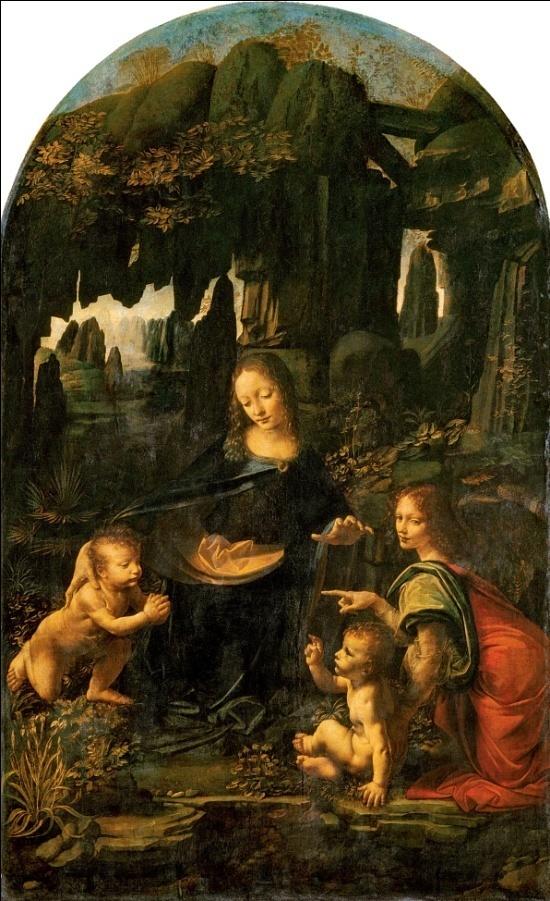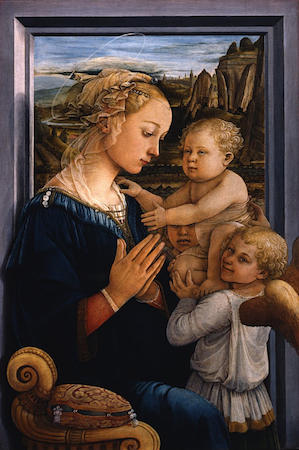Introduction
Art is a tool used to explain ideas about society. Art as part of history, informs human beings about certain ideologies that were considered to be significant in history. Differences in the art are used to explain differences in ideologies of different periods. This discussion is based on early Renaissance and high renaissance. Leonardo da Vinci (High Renaissance) and Fra Filippo Lippi (Early Renaissance) have been compared to ideologies of their paintings.
High Renaissance
High Renaissance is characterized by the need to make art look real, especially in the development of a strong interest in anatomy. The high Renaissance is also characterized by the need to paint ideals of the cosmic world in sculptures and paintings(Hatfield 315). Artists in high renaissance are concerned about religious and political tensions presented through paintings. In particular, artists in high renaissance engaged in the search for cosmic truths. Paintings reflected concepts such as proportion, order, and harmony(Schroeder and Borgerson 153).
Early Renaissance
In the case of the early Renaissance, artists were interested in humanism. Artists were concerned about painting human beings while placing less importance on God or cosmic truths. Despite less importance on cosmic truths, Christianity was the only religion in the early renaissance. However, the introduction of humanism by painters ensured that religion is given a human face. Painters portrayed saints, holy family, and apostles as real-life members of the society rather than idealized figures as depicted by artists in the high Renaissance(Holberton 31). Man as the center of art motivated the study of the human body. As a result, the study of the nude led to artists being pre-occupied with nature and other forms of life.
Leonardo da Vinci (High Renaissance)

The ‘Virgin of the Rocks’ is an example of art painted by Leonardo da Vinci (1452-1519). Leonardo da Vinci is concerned with religion, especially the Virgin Mary, Jesus, and John the Baptist. In the art, ‘Virgin of the Rocks’ da Vinci paints holy figures through the use of gentle light in a rocky environment. Leonardo da Vinci creates paintings that are physical and real. Paintings by leading Renaissance artists have elevated levels of spirituality that cannot be denied (Ginn and Lorusso 295). In the ‘Virgin of the Rocks,’ da Vinci unites reality and the spiritual. In particular, the soul and the substance are in unity so that no person can question the authenticity of the painting.
Fra Filippo Lippi (Early Renaissance)

In the figure above from the early Renaissance, Fra Filippo Lippi uses a painting that appears real. In particular, the figures in the painting appear real and human. In reality, it is not easy to tell whether these are divine figures. However, religion and the divine can be analyzed through sorrowful expressions and clasping of hands through prayer. On the contrary, in the high Renaissance, artists identified the need to create spiritual figures that do not depend on abstraction (Hills 217). Artists in the high Renaissance focused on the painting that moved towards flatness and elongation. Paintings in the early renaissance can look spiritual if they look unreal. Real paintings in the early Renaissance sacrifice spirituality and divine messages.
Conclusion
The early Renaissance is less concerned about God. Artists at the beginning of the Renaissance identified the need to give religion a human face. Images painted in high renaissance reflected the existence of non-real life especially the holy family, Jesus, saints, and apostles. High importance to the man in the early Renaissance led to real paintings. In the process, the concept of spirituality is questioned. Real pictures have no high levels of spirituality when compared to spiritual images developed in the early Renaissance.
Works Cited
Cameron, Stuart, and Jon Coaffee. “Art, Gentrification and Regeneration – From Artist as Pioneer to Public Arts.” European Journal of Housing Policy 5.1 (2005): 39–58. Web.
Ginn, Sheryl R, and Lorenzo Lorusso. “Brain, Mind, and Body: Interactions with Art in Renaissance Italy.” Journal of the history of the neurosciences 17.3 (2008): 295–313. Web.
Hatfield, Rab. “Five Early Renaissance Portraits.” The Art Bulletin 47.3 (2014): 315–334. Web.
Hills, Paul. “Ray, Line, Vision and Trace in Renaissance Art.” Word & Image 6.3 (1990): 217–225. Web.
Holberton, Paul. “Of Antique and Other Figures: Metaphor in Early Renaissance Art.” Word & Image 1.1 (2012): 31–58. Web.
Schroeder, Jonathan E., and Janet L. Borgerson. “Innovations in Information Technology: Insights from Italian Renaissance Art.” Consumption Markets & Culture 5.2 (2002): 153–169. Web.